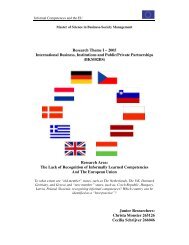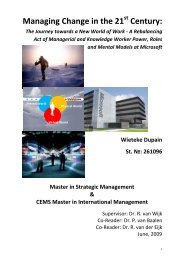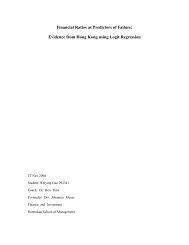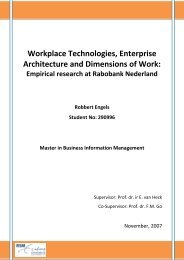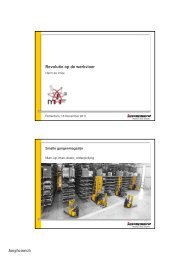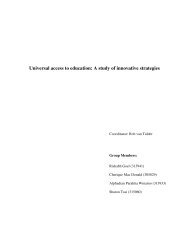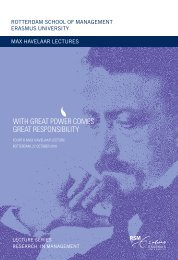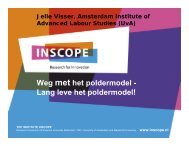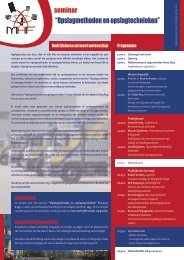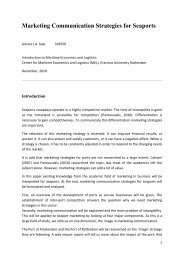here - ERIM - Erasmus Universiteit Rotterdam
here - ERIM - Erasmus Universiteit Rotterdam
here - ERIM - Erasmus Universiteit Rotterdam
Create successful ePaper yourself
Turn your PDF publications into a flip-book with our unique Google optimized e-Paper software.
A validation Study of House of Quality key performance indicators<br />
16<br />
Figure - 1 House of Quality<br />
As showed in Figure - 1, the House of Quality is formed by a number of elements (rooms) on different<br />
levels. The left room lists the member’s needs or requirements, the “Whats”. The room below the<br />
roof consists of the “Hows”, the technical (design) requirements. Function of the “Hows” is to<br />
translate the “Whats” into terms that are measurable. The body of the house presents the<br />
correlation between the “Whats” and “Hows”. Through this correlation matrix we are able to analyze<br />
the extent to which each “How” affects each “What”.<br />
1.3 Problem Definition and Research Questions<br />
Nowadays an information worker has got many technological tools available. The present study<br />
levers IT as an enabler of work design. In the communications context and the array of tools available<br />
for social interaction, IT tools are applied both on the co-located and remote work level. The<br />
information environment helps workers to solve increasingly complex and ambiguous problems.<br />
However, research that mapped information flows among executives indicated ‘that t<strong>here</strong> was only<br />
limited collaborative activity in pockets of the organization’; ‘in general this lack of collaboration was<br />
a product of people not knowing what other people knew’ (Cross, 2001).<br />
From an information environmental perspective ICT enables organizations to decentralize their<br />
decision making system. By extension decentralized types of organizations provide people the<br />
opportunity to make decisions that matter to them (Malone, 2004:6). Hence, it offers workers more<br />
freedom in how and w<strong>here</strong> to carry out their job. In spite of such promise, the new ways of working<br />
paradigm faces a formidable challenge for organizations. Namely, they have to initiate a “change” in<br />
the mind of the information workers, especially on how to deal with their new-found freedom on the<br />
job.




